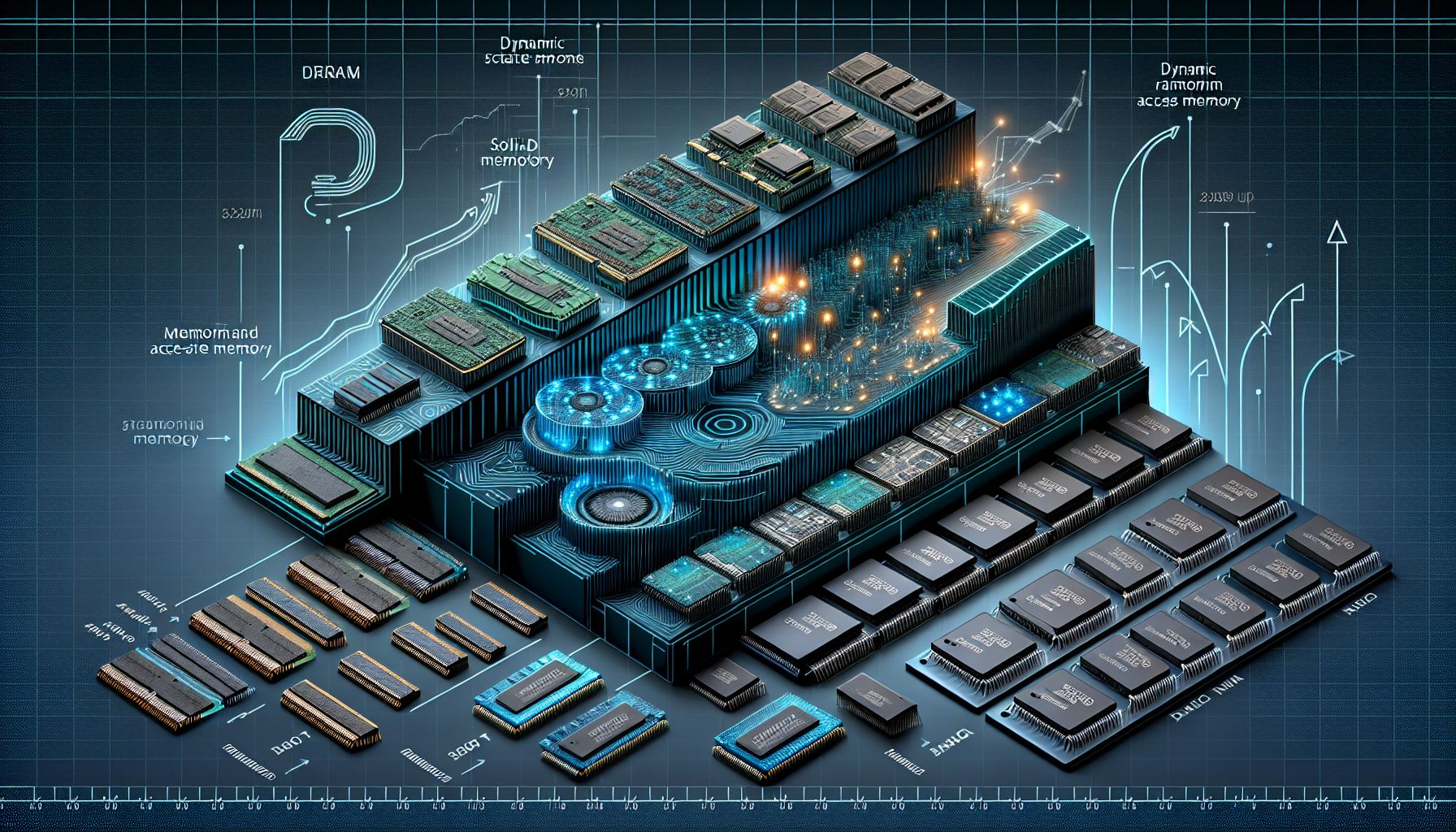📌 Let’s explore the topic in depth and see what insights we can uncover.
⚡ “Believe it or not, the memory powering your cutting-edge smartphone is a product of decades of trailblazing tech evolution. Dive into the captivating journey from the birth of dynamic RAM to the revolution of solid-state memory!”
In the digital era, where data is the new oil, memory units serve as the reservoirs holding this precious commodity. The development and evolution of memory units, particularly Dynamic Random Access Memory (DRAM) and solid-state memory, have shaped our personal and professional lives profoundly. This blog post takes you on a journey through the evolution of DRAM and solid-state memory, unraveling the intricate processes and technologies that power your favorite devices. From the early days of vacuum tubes to the sleek solid-state drives (SSDs) and the modern DRAM modules, memory technology has come a long way. With every leap in memory technology, we’ve been able to pack more power into smaller devices, enabling a world of possibilities from supercomputers to smartphones, from AI-powered robots to IoT devices.
🏗️ The Humble Beginnings: Vacuum Tubes and Magnetic Drums

Exploring the Evolution of DRAM and Solid-State Memory
Memory technology took its first baby steps in the era of vacuum tubes, which were essentially glass tubes that could control electric current. They were the building blocks of the first generation of computers, including the iconic ENIAC. However, these vacuum tubes were bulky, power-hungry, and prone to overheating, making them impractical for long-term use. The second generation of memory technology saw the introduction of magnetic drums. These cylindrical devices stored data in the form of magnetic patterns, a significant leap from the vacuum tubes. However, they were still relatively slow and had a limited storage capacity.
🚀 The Rise of Dynamic RAM (DRAM)
In the late 1960s, a groundbreaking invention revolutionized the world of memory technology: Dynamic Random Access Memory (DRAM). Unlike its predecessors, DRAM stored bits of data in separate capacitor-based cells within integrated circuits, making it faster and more efficient. The invention of DRAM was a game-changer, allowing computers to access data at unprecedented speeds. However, DRAM had a major drawback: it was volatile, meaning it lost all stored data when the power was switched off. This was a significant limitation for users who wanted to store data permanently. Despite this, DRAM has undergone several improvements over the years, making it faster, denser, and more efficient. Today, it is a crucial component of many digital devices, from computers and servers to gaming consoles and digital cameras.
💾 The Advent of Solid-state Memory
As the digital revolution took off, the need for permanent, non-volatile memory became more pressing. Enter solid-state memory, a type of memory that retains data even when the power is switched off. Today, solid-state memory is a ubiquitous part of our digital lives, powering everything from our smartphones and laptops to our digital cameras and music players. One of the most popular forms of solid-state memory is the Solid-State Drive (SSD), a non-volatile storage device that uses integrated circuit assemblies to store data persistently. SSDs have several advantages over traditional hard drives, including faster read/write speeds, greater durability, and lower power consumption.
🚴 The Evolution from DRAM to Solid-state Memory: A Comparative Study
Comparing DRAM and solid-state memory is like comparing apples and oranges. 🧩 As for They, they’re designed for different purposes, and each has its strengths and weaknesses.
Speed
DRAM is faster than solid-state memory, making it ideal for tasks that require rapid data processing such as gaming or video editing. However, solid-state memory is still significantly faster than traditional hard drives.
Volatility
DRAM is volatile, meaning it loses all stored data when the power is switched off. In contrast, solid-state memory is non-volatile, retaining data even when the power is switched off. This makes solid-state memory ideal for long-term data storage.
Durability
Solid-state memory is more durable than DRAM, as it has no moving parts. This makes it more resistant to physical damage, such as shocks or drops.
Energy Efficiency
DRAM consumes more power than solid-state memory, making it less energy-efficient. 🔍 Interestingly, a crucial consideration for battery-powered devices such as laptops or smartphones.
🧭 Conclusion
The journey from bulky vacuum tubes to sleek solid-state memory has been a long and fascinating one, marked by constant innovation and improvement. Today, DRAM and solid-state memory are the twin pillars of modern digital devices, each with its unique strengths and weaknesses. As we look to the future, it’s clear that the evolution of memory technology is far from over. With advancements in nanotechnology, quantum computing, and AI, we can expect even more exciting developments in the world of memory technology. So, whether you’re a tech enthusiast or just someone who uses digital devices, stay tuned for the next chapter in this exciting saga!
🤖 Stay tuned as we decode the future of innovation!
